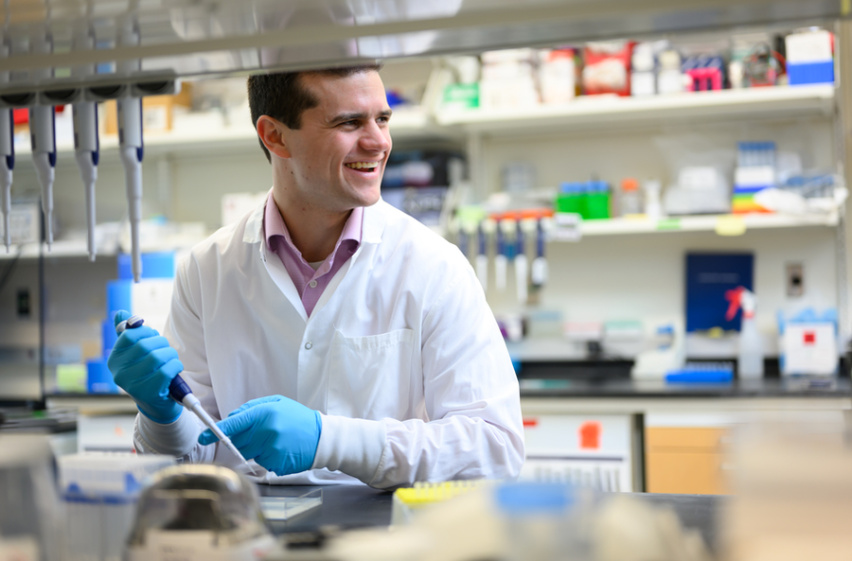
MIT Koch Institute
March 4, 2025
A Bridge Project team headed by Robert Langer, Giovanni Traverso, and Dana Farber Cancer Institute’s Douglas Rubinson is developing a novel system for more accurate chemotherapy dosing in cancer patients.
Current chemotherapy dosing is based on a formula developed in 1916 using data from nine patients, which estimates a patient’s body surface area. The formula does not take into account important influences such as differences in body composition, genetic makeup, or circadian fluctuations that can significantly affect how a drug interacts with a patient and lead to avoidable toxicity or insufficient benefit.
“Once my advisors presented the reality of how chemotherapies are dosed,” remembers graduate student Louis DeRidder, “I thought, ‘This is insane. How is this the clinical reality?’”
Advised by Langer and Traverso, DeRidder is a driving force within the Bridge Project team. He details his journey to a career in biomedical research—from a life-threatening medical emergency as a kid to shadowing program in high school and undergraduate research at Johns Hopkins—in an MIT News feature. Now at the Koch Institute, DeRidder explains how he became interested in tackling the chemotherapy dosing problem, which has also become his graduate thesis project.
DeRidder has worked with the Bridge team to develop CLAUDIA, a closed-loop drug delivery system designed to tailor doses of chemotherapy to individual patients for maximum safety and effectiveness. Notably, he and his colleagues are not devising a new ‘magic formula,’ although they do use multiple modeling and algorithmic tools.
With CLAUDIA, drug concentrations in the blood can be continually monitored and the information used to automatically adjust the infusion rate of the chemotherapy drug to keep the dose within the target range. Demonstrated in an in vivo study published in Med, the Bridge Project team’s approach is designed to be used with many different chemotherapy drugs and being tested in a clinical study as the researchers assess opportunities for translation.